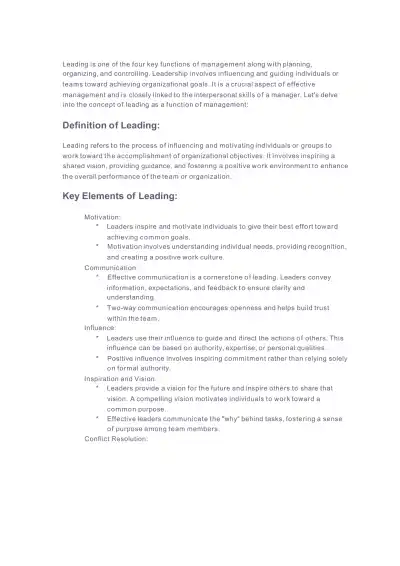Page 1

Loading page ...
Explore the essential management function of leading—learn how motivation, communication, decision-making, and coaching drive team success and organizational growth through effective leadership strategies.

Loading page ...
This document has 3 pages. Sign in to access the full document!